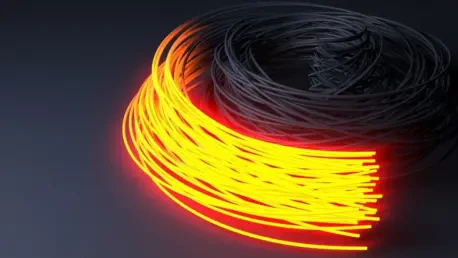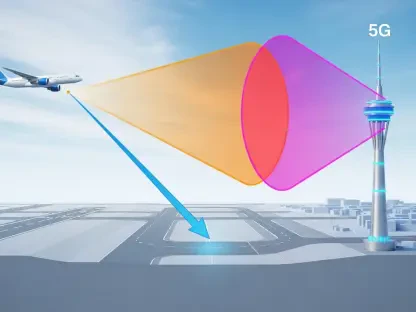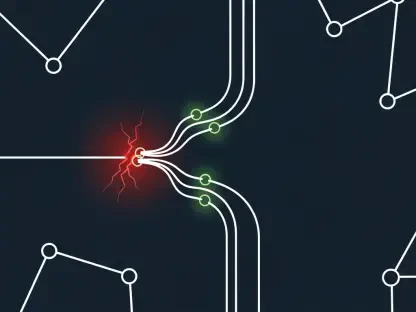In an innovative field study, researchers presented their findings on using fiber-optic cables to detect and analyze seismic activity beneath glaciers at the Seismological Society of America’s Annual Meeting. The study, conducted on Switzerland’s Gornergletscher, the country’s second-largest glacier, demonstrated the effectiveness of fiber-optic technology in capturing icequake signals. Led by a team from ETH Zürich, including Tom Hudson and Andreas Fichtner, this groundbreaking research offers new insights into glacial dynamics and their implications for climate change.
New Approach to Monitoring Glacial Seismic Activity
Utilizing Fiber Optic Technology
Traditional seismic sensors often face significant challenges in glacial environments due to unstable terrain and harsh conditions. However, this study implemented a dense 2D grid of fiber-optic cables across a crevasse field to capture icequake signals resulting from crevasse formation. Unlike tectonic quakes, which are caused by shear forces, icequakes occur as directional fractures in glacial ice. Fiber optics, initially developed for telecommunications, proved to be highly effective in detecting these subtle seismic events within the glacier.
The fiber-optic system leveraged the principles of distributed acoustic sensing (DAS), which uses the cable as a continuous sensor over long distances. By analyzing changes in light pulses sent through the fiber, researchers could detect various types of seismic activity, including low-frequency signals often missed by conventional sensors. The team recorded 951 individual icequakes, providing valuable data on the internal stresses and fractures within the glacier, greatly enhancing the understanding of glacial behavior.
Importance of Crevasse Formation
The formation of crevasses plays a critical role in the dynamics of glaciers, acting as channels through which meltwater can reach the glacier’s base. This process has significant implications for glacier movement and stability, potentially accelerating ice flow and contributing to glacial melt and rising sea levels. The traditional seismic arrays used in such studies struggle with the unstable and dynamic nature of glacial environments. However, the fiber-optic cables installed in this study performed exceptionally well, even as they melted into the glacier during the day and froze solidly overnight, ensuring a strong and stable coupling with the ice.
This unique setup enabled the detection of low-frequency seismic signals that persisted over extended periods. By capturing a more comprehensive range of seismic activity, the fiber-optic grid generated data that was 20 times more voluminous than that from traditional seismic node arrays. This significant increase in data density improved spatial and temporal resolution, allowing scientists to better visualize the propagation, reflection, and resonance of seismic waves within the glacier.
Enhanced Visualization and Broader Implications
Advanced Seismic Data Analysis
The extensive dataset collected from the fiber-optic grid allowed researchers to visualize the full wavefield of seismic waves traveling through the glacier. This analysis revealed complex patterns of wave propagation and interactions with internal structures, such as fractures and voids. The observed oscillations in the seismic waveforms indicated resonance effects between adjacent fractures, challenging the previously held belief that these interactions were primarily driven by water.
Such detailed visualization of seismic waves provides a deeper understanding of the glacial subsurface’s mechanical properties and stress distribution. With the advanced resolution offered by fiber-optic cables, scientists can identify key areas of fracture clusters and anticipate potential points of structural failure. This capacity for precise mapping is invaluable for predicting glacier behavior and enhancing models used to forecast the impact of climate change on glacial melt and subsequent sea-level rise.
Potential Applications in Other Environments
While the immediate focus of the study was on glacial seismic activity, the success of this approach has broader implications for monitoring various geological environments. The researchers from ETH Zürich believe that this fiber-optic technology could be adapted to detect crack formation in carbon capture reservoirs, geothermal systems, and volcanic regions. The uniform seismic profile of glacier ice made it an ideal testing ground, suggesting that fiber optics could perform effectively in more heterogeneous geological settings, such as bedrock or sedimentary layers.
This adaptability expands the potential applications of fiber-optic sensing, offering a powerful tool for monitoring and understanding seismic activity in diverse contexts. By providing high-resolution, real-time data, this technology could significantly improve the safety and efficiency of operations in industries reliant on subsurface stability, such as energy production and storage. Additionally, the insights gained from these studies could inform the development of more accurate predictive models, aiding in the mitigation of risks associated with natural disasters and environmental changes.
Future Prospects and Broader Impact
Constructing a Three-Dimensional Seismic Map
Building on the success of this initial study, the research team, led by Tom Hudson, aims to leverage this technique to create a three-dimensional seismic map of the glacier’s interior over the next several years. Such a comprehensive map would quantify the density and extent of fractures within the ice, offering an in-depth profile of the glacier’s structural integrity. The ability to precisely locate and measure the distribution of fractures would provide early warnings for potential zones of structural failure and highlight areas most vulnerable to seasonal thaw and accelerated ice flow.
This advanced mapping capability would contribute significantly to the understanding of glacial dynamics and enhance predictive models for glacier response to climate change. By identifying patterns and trends in fracture formation and icequake activity, researchers can better anticipate the impacts of melting glaciers on sea-level rise and global water cycles. The data collected will support ongoing efforts to develop effective strategies for managing and mitigating the effects of climate change on glacial environments.
Implications for Climate Change Research
This research, carried out on Switzerland’s Gornergletscher, the country’s second-largest glacier, highlighted the potential of fiber-optic technology to effectively capture icequake signals. Led by ETH Zürich’s team, including Tom Hudson and Andreas Fichtner, the study provides new insights into glacial dynamics and their broader implications for climate change. The innovative use of fiber-optic cables represents a significant advancement in our ability to monitor seismic activities in glacial environments, offering a new perspective on how these massive ice bodies behave and respond to environmental changes. This research underscores the importance of understanding glacial movements in the context of climate dynamics and could pave the way for more detailed and accurate climate models in the future.









